“You should try it,” my wife, Lori, told me after her first experience with acupuncture.
I was skeptical; after all, hadn’t she told me the same thing after she had been to yoga exercise class? I could almost feel the body contortions returning as I thought of those awkward yoga poses.
Images of the young lady on the front row of yoga class flashed before my eyes.
“Now that’s the way you do it,” I thought, back then, as I watched her flow like a ballerina into each new yoga position.
“And this is the way I can try and do it,” I muttered, struggling to bring my left leg over my right knee, making another valiant but failed effort to positon myself in the “seated twist.”
“But you never gave yoga a chance, and you did say it made you stretch and feel better,” Lori reminded me, her words bringing me back to reality.
She was right; I never really gave yoga a fair shot. And I had good intentions of trying it again.
“Okay,” I said, succumbing to her suggestion about acupuncture, “you want to make me an appointment?”
“I already have,” she informed me.
And so, I went.
The acupuncturist was the daughter of a trusted friend. Until we met her, we had no intentions of seeing an acupuncturist. But Lori has had a nasty time with plantar fasciitis, and I struggle with lower back pain. It wasn’t like we woke up one Saturday morning and said, “Hey, we don’t have anything else going on, let’s try going to an acupuncturist.”
So, Lori’s recommendation to me was based on her successful results with this particular acupuncturist.
My image of acupuncture was of someone prodding and poking me with needles. In fact, like any macho man, my first question to my wife after she returned from her appointment was not, “Did it work?” but “Did it hurt?”
No, it isn’t painful, I discovered. Sometimes I could feel the needles, and even had a mild shock or two, but even that was minimal.
“Why the needles anyway?” I asked the acupuncturist. My real question was, “Just how does it work?”
She tried to explain; I tried to understand.
I’m a visual learner, so I did a little of my own research. According to the Mayo Clinic, “Acupuncture involves the insertion of extremely thin needles through your skin at strategic points on your body… Traditional Chinese medicine explains acupuncture as a technique for balancing the flow of energy or life force — known as qi or chi (CHEE) — believed to flow through pathways (meridians) in your body. By inserting needles into specific points along these meridians, acupuncture practitioners believe that your energy flow will re-balance.”
In contrast to traditional Chinese medicine, Western practitioners of acupuncture, “view the acupuncture points as places to stimulate nerves, muscles and connective tissue. Some believe that this stimulation boosts your body’s natural painkillers and increases blood flow.”
I’m still not sure exactly how it works, I just know it did for me. Of course, it’s not for everyone, and there are certainly no guarantees that it will achieve everyone’s desired results. And I suppose I should say, just to be safe, “consult with your health care professional,” to make sure you are a candidate for acupuncture.
After a few treatments, I felt a decrease of pain in my lower back, and less inflammation in an ailing “turf toe” injury.
Another benefit was relaxation—which spurred me to reincorporate a basic value of mine: a mindful lifestyle. For the past few months, because I’ve taken on more than I should have, I’ve violated most of my principles for balancing work and rest. What they call an “acupuncture nap,” helped me at least begin the shift to a more placid matrix for life, or at least to see my experience with acupuncture as a “marker,” reminding me to make time to take time for myself.
So, perhaps I will revisit acupuncture from time to time, just to make sure I’m not drifting mindlessly out of mindfulness.
And now that I’m feeling all loose and limber, who knows what’s next?
“Lori, what time did you say that yoga class meets?”
